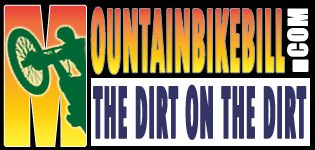I get questions regarding helmet cams off and on regarding the various all-in-one and lipstick camera setups. To start off with here is my current setup and Video How-To Page. The camcorder mounted on the helmet method described there is what I use. You can not beat the quality you get from using an actual camcorder versus the tiny optics of a lipstick camera. For me image quality is extremely important. I want my footage to look good even if I viewing it on a big screen TV.
The vast majority of people I have talked and emailed with on the subject are mostly concerned with sharing the videos online or viewing it on their computer. For these users the lipstick cameras and all-in-one setups can work just fine. If you are not going to use the camcorder mounted on a helmet setup here is what I would consider next.
Lipstick + MiniDV Camcorder
A high quality lipstick camera feeding a miniDV camcorder in your bag via an AV input jack. The recording quality will be the best possible, 720 by 480 DV-AVI (uncompressed). You can also use the camcorder for other things such as off the bike stuff or around the house stuff. Should you later decide to do the helmet mounted camcorder approach you already have a camcorder. I highly recommend that you get a camcorder and that has a LANC connection. This will allow you to use wired remote controls so that you can stop and start recording easily without digging in your pack. (The wireless remotes that come with camcorders are almost exclusively infrared which means the remote and camcorder must seet each other to work. That won’t happen if it is in your pack)
Hoytech has a nice kit at a pretty reasonable price. I would get the Professional Helmet Camera Kit. Thier site also has a good list of compatiable camcorders.
Lipstick + minDVR
The next catergory down I would consider is a high quality lipstick camera feeding a mini DVR vice a camcorder. Most of the all-in-one and minDVR setups involve recording to some type of flash memory card coupled with video compression. Don’t be fooled if they say they record to AVI. It is a compressed form of an AVI. Most of these setups give you a few options for how much compression you use. The more compression you select the more time you can record on the memory card but the video quality gets progressively crappier. Remember you can always increase the video compression later, but if you compress right from the start, it is never going to look any better. I highly recommend that you record with the highest possible quality setting if you use an all-in-one or minDVR unit. This however will mean you will need to carry an extra memory card or two with you on the trail. Considering the price of memory cards today this should not be a big deal.
There is a nice aspect of the tradeoff of using a miniDVR. You can use the minDVR for other things such a portable MP3/Video Player.
If I was going this route I would buy Helmetcamera.com’s HC1 kit with the 560line lipstick camera. The resolution of the lipstick camera is better than the DVR’s recording ability, but should you later decide to use a camcorder, you will get the full advantage of the better lipstick camera. While Achros has a miniDVR helmetcam system available, I think the setup from helmetcamera.com is a better option as you are not forced to use the Achros lipstick camera which is not a particularly good one.
All-in-One Systems
Before going with an All-In-One system, you also need to assess how much into the video scene you think you are going to get into as the all-in-one units do not “grow” well. You can not improve the recording capability later. You also can not easily use this setup for other things that are not Point of View shooting, like filming your kids hockey games, birthday parties or whatever. They are however really easy to use out on the trail.
I think the best model going in this class is the VIO POV1 as it has the best recording capability in the class, however it is still not on par with a miniDV Camcorder . It is waterproof and it has a remote that can be mounted on your handlebars or on your camelback shoulder strap. It however is not anywhere near cheap, but if you go this route you will mostly likely be satisfied for a long time.
The VholdR is a nice very convenient and tiny package. It weigh less than five ounces. The videos I have seen from them look alright.
Finally the GoPro Helmet Hero has a lot of bang for the buck. Okay quality at a great price. At less than 200 bucks or so it is an okay way to get into doing video, but you can quickly outgrow it.
Final Words
When deciding on which way you want to go, I think of this along the same lines as someone first getting into mountain biking on real trails and getting their first bike. If you get a department store bike you will not be happy for long. If you go buy a boutique brand bike with all the goodies and end up not really into mountain biking you have wasted a bunch of money. However if you get a well built bike with a mid-range group of components and you get into mountain biking seriously you will be happy for a long time and you can upgrade to top shelf components later.
